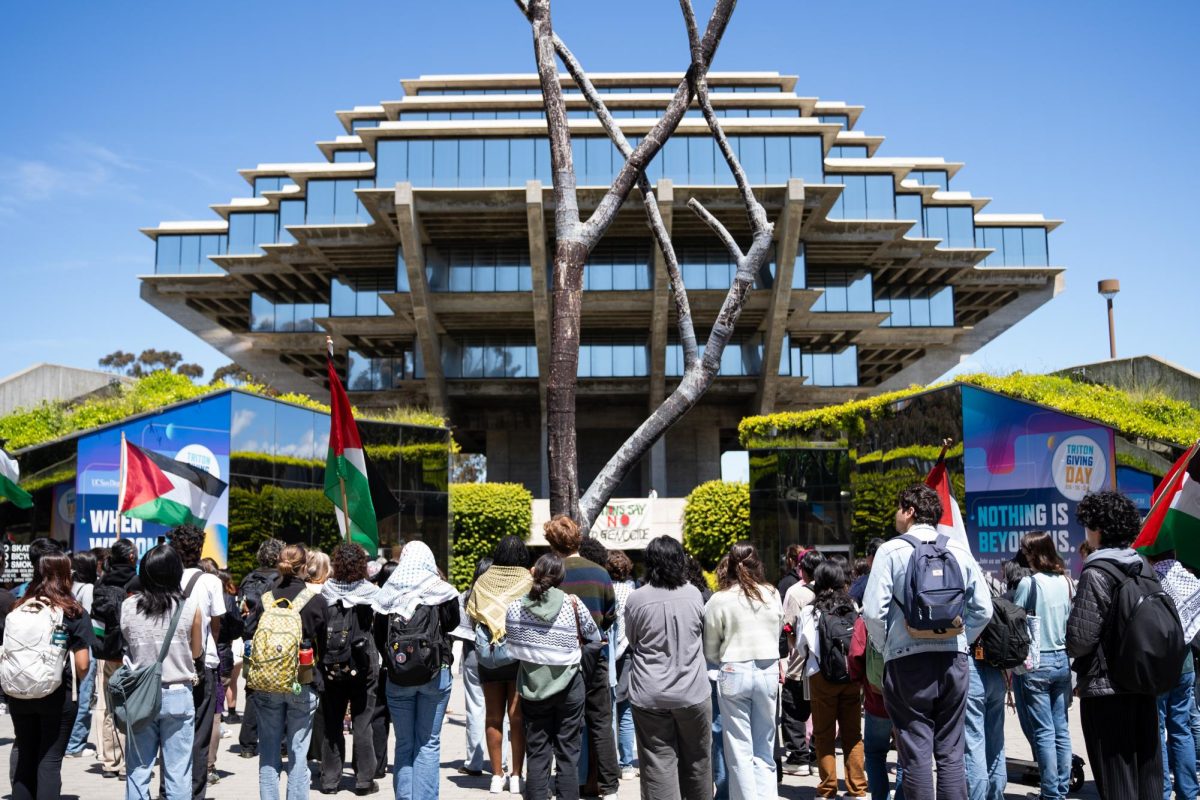For the college-age generation’s collective ego, it’s been a rough couple of weeks. At the end of February, sociologists at San Diego State University released a study which found that people born after 1982 – chances are that means you – are some of the most narcissistic people on record.
And last week, a column by Michael Skube in the Los Angeles Times smashed the nation’s graduating class of 2005, which scored lower on federal standardized tests despite graduating with a markedly higher average GPA than students of the previous generation.
“”High school students’ grade-point averages keep going up, up, up – and what students actually know stays where it’s always been,”” Skube complained on the Times opinion pages, noting that while this year’s high school graduates accumulated more credits and took more college preparatory courses, they still scored lower on standardized reading tests than they did in 1992. “”If anything, students seem to know even less, GPAs notwithstanding.””
It’s hard not to wince at such accusations. Do we, a generation of university-bound 4.0-mongers, have a lofty opinion of ourselves that doesn’t exactly jive with reality?
Well, not necessarily.
A careful look at the numbers shows that Skube’s assertion that GPA does not accurately reflect the ability of college-bound high school seniors doesn’t hold as much water as it might seem.
According to the 2005 National Assessment of Educational Progress, the nationwide survey of academic ability cited by Skube, this year’s students earned a lower average score in reading aptitude than those tested in 1992.
But it’s only the average score that’s lower. The top-scoring students in 2005 performed just as well as the top-scoring students did 15 years ago: For the upper 10th percentile, the 2005 average score is identical to the 1992 score, while the decrease in scores for the top 25th percentile is so small it’s barely clinging to statistical significance.
In other words, the best students (or the best test-takers, anyhow) are doing as well as they ever have. Since the University of California is tasked with educating the top 4 percent of California high school graduates – presumably the same students who scored in the top 10th percentile of the NAEP surveys – incoming students are probably just as able as they were 15 years ago. At the very least, we’re savvy enough to know how to split hairs.
Perhaps more importantly, Skube’s analysis of grade inflation assumes that GPA must remain an absolute standard to be useful. Practically speaking, it doesn’t really matter if today’s college applicants have higher GPAs than students from 15 years ago: Today’s applicants with inflated GPAs are competing against peers who also have inflated averages, and the result is simply a higher average. Whether grades are centered on 2.68 (as they were in 1990) or 2.98 (as they were in 2005), so long as all high school students have the same grading standards (admittedly a whole new can of worms) GPA will still be an effective means of evaluating relative performance.
Partially to account for the subjectivity of grades, most large schools admit students based on both GPA and standardized test scores, the combination of which is a more accurate predictor of raw ability.
Perhaps the greatest problem with inflated GPAs is the inflated sense of accomplishment that might come along with a sterling 4.3 average. Surely students who are accustomed to breezily earning A’s in high school will suffer from a nasty shock once they get to college, right?
Well, not necessarily.
At UCSD at least, a number of student surveys indicate that today’s incoming students are far more realistic about their own academic abilities than they were a generation ago. According to the 2003 UC Undergraduate Experience Survey, about 70 percent of UCSD students rated themselves as “”above average”” in academic ability – down from a whopping 94 percent in 1991.
Similarly, in 1991, 65 percent of UCSD freshmen believed they would maintain at least a B average at the university. Today’s students are more modest – and more accurate – with only 53 percent of freshmen making the same claim in 2003. Thankfully the number of UCSD students from Lake Wobegon – that mystical town where everyone is above average – has thankfully slipped over the years.
If the latest NAEP reports show anything, it’s not that the K-12 education system is leaving students unprepared for college, but that the system is failing its most vulnerable students. The NAEP studies show that the steepest drops in reading performance occurred in the lower percentile groups, particularly among the bottom 10 percent of test takers.
Whether it’s cynical or simply realistic to guess that these students won’t ever have the chance to worry about how well they’ll do in college, it seems obvious that the real disappointment isn’t the quality of the average high school graduate, but the widening performance gap between the most successful students and least. And that’s where the brow-furrowing and hand-wringing should be focused.







